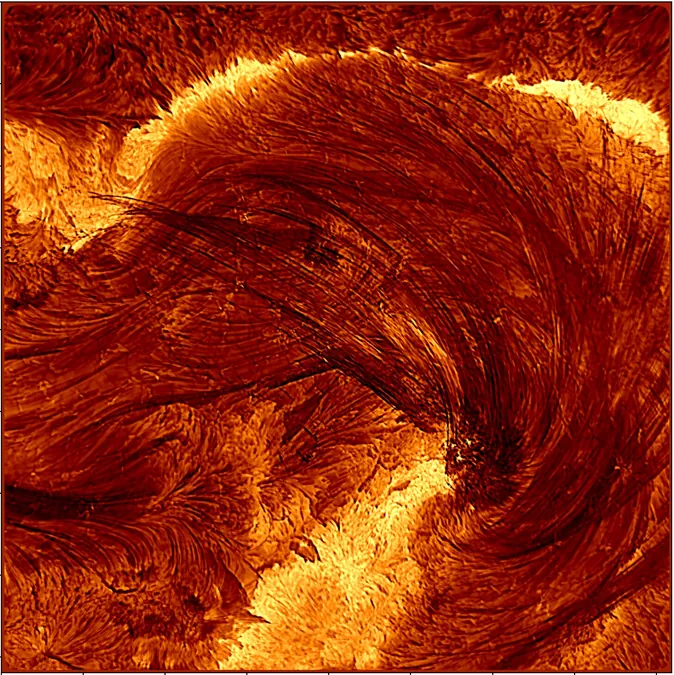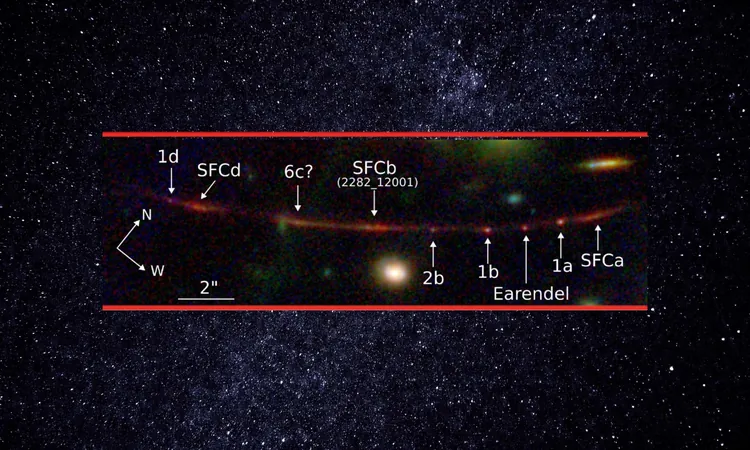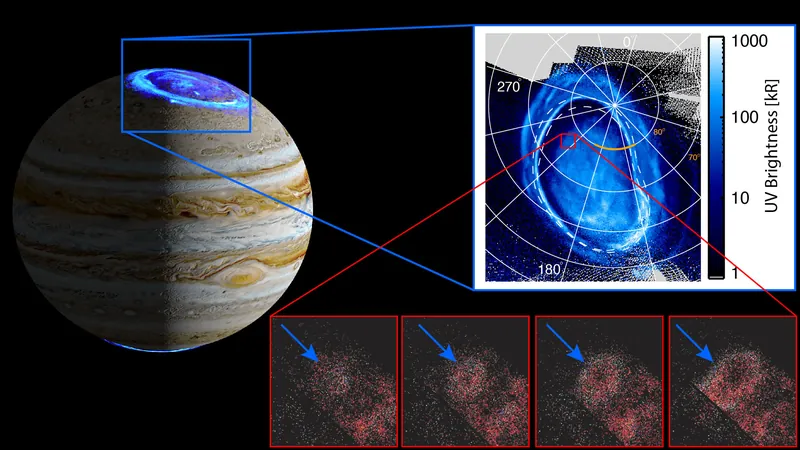
Unveiling the Sun: Inouye Solar Telescope Captures Stunning Details of Solar Flares
2025-08-25
Author: Olivia
A Revolutionary Breakthrough in Solar Observation
Astronomers have captured the highest-resolution images ever of a solar flare, potentially transforming our understanding of the sun’s magnetic architecture. The Daniel K. Inouye Solar Telescope (DKIST), managed by the National Solar Observatory, peered into the decay phase of an X1.3-class flare on August 8, 2024, at 20:12 UT, unveiling intricate dark coronal loop strands with unprecedented clarity.
Exploring the Unseen Details of the Solar Atmosphere
These coronal loops, measuring an average of 48.2 kilometers wide—possibly even as slender as 21 kilometers—represent the smallest ever imaged and could redefine how we comprehend solar coronal structures. This exceptional observation marks a significant leap forward in flare modeling, propelling it into unexplored dimensions.
Crucial Implications for Space Weather Forecasting
Coronal loops, which are arches of plasma tracing the sun's magnetic field lines, often precede solar flares that unleash massive bursts of energy. This energy can disrupt Earth's critical infrastructure, making it vital to precisely understand such phenomena. Observing sunlight at the H-alpha wavelength (656.28 nm) allows scientists to reveal features otherwise unnoticed.
First-Ever X-Class Flare Observation by DKIST
Cole Tamburri, the lead author of a study published in *The Astrophysical Journal Letters*, emphasized the significance of this observation: "This is the first time the Inouye Solar Telescope has captured an X-class flare." Such encounters under perfect observing conditions shed light on the most energetic events produced by our sun.
Team Collaboration and Groundbreaking Findings
The research team, comprised of specialists from NSO, the Laboratory for Atmospheric and Space Physics, and the University of Colorado Boulder, meticulously analyzed the fine magnetic field loops above the flare ribbons, pushing the observation limits of the telescope. Tamburri remarks, "Before Inouye, we could only imagine this scale; now we witness it firsthand." The telescope's Visible Broadband Imager (VBI) can capture details as fine as 24 kilometers, outstripping its peers.
Unearthing Surprises in Solar Dynamics
Originally aimed at examining chromospheric dynamics, VBI unexpectedly revealed ultra-fine coronal structures capable of enhancing flare models. “We stumbled across something even more intriguing,” Kazachenko shared, illustrating how this discovery flips longstanding theories on their heads.
A Game-Changer for Solar Research
The findings suggest that these loops may be fundamental structures—the very building blocks of flare architecture. Tamburri encapsulates the excitement, saying, "It’s like transitioning from seeing a forest to observing every tree up close." The new images—dark, thread-like loops juxtaposed against brilliant flare ribbons—demonstrate an astonishing level of detail.
A Landmark Moment in Understanding the Sun
With breathtaking imagery that even non-experts can appreciate, this moment marks a watershed in solar science. As we finally observe the sun operating at its intricate scales, the potential for future discoveries expands tremendously. "It's a landmark moment in solar science," Tamburri concludes, emphasizing our newfound clarity into the sun’s magnetic ballet.









 Brasil (PT)
Brasil (PT)
 Canada (EN)
Canada (EN)
 Chile (ES)
Chile (ES)
 Česko (CS)
Česko (CS)
 대한민국 (KO)
대한민국 (KO)
 España (ES)
España (ES)
 France (FR)
France (FR)
 Hong Kong (EN)
Hong Kong (EN)
 Italia (IT)
Italia (IT)
 日本 (JA)
日本 (JA)
 Magyarország (HU)
Magyarország (HU)
 Norge (NO)
Norge (NO)
 Polska (PL)
Polska (PL)
 Schweiz (DE)
Schweiz (DE)
 Singapore (EN)
Singapore (EN)
 Sverige (SV)
Sverige (SV)
 Suomi (FI)
Suomi (FI)
 Türkiye (TR)
Türkiye (TR)
 الإمارات العربية المتحدة (AR)
الإمارات العربية المتحدة (AR)